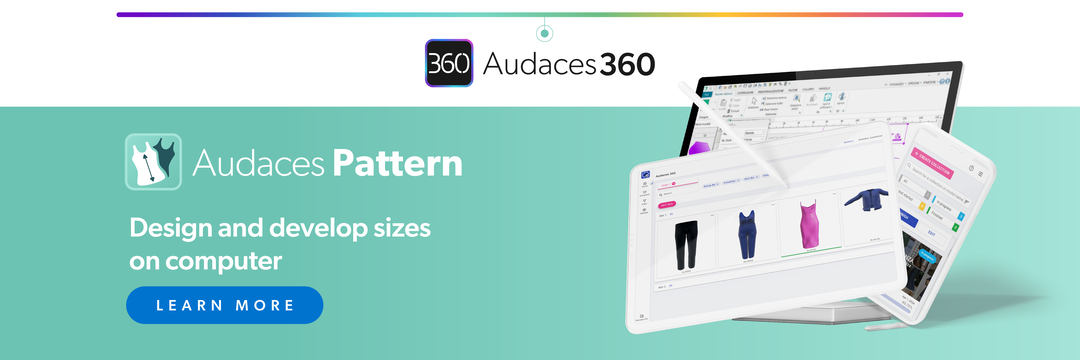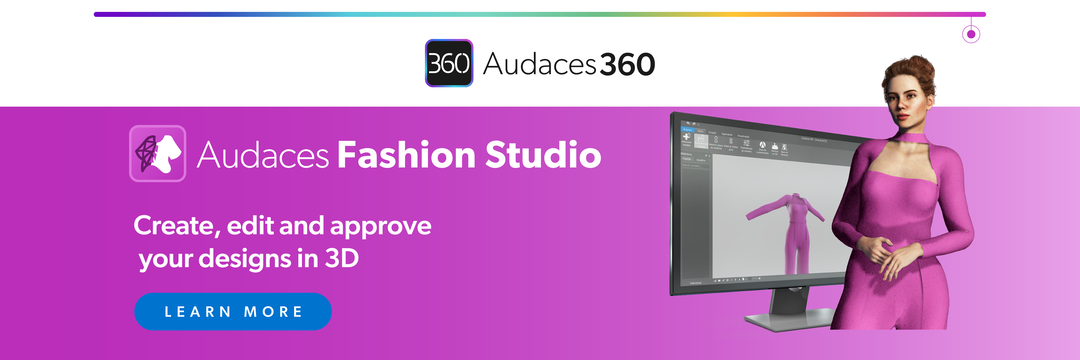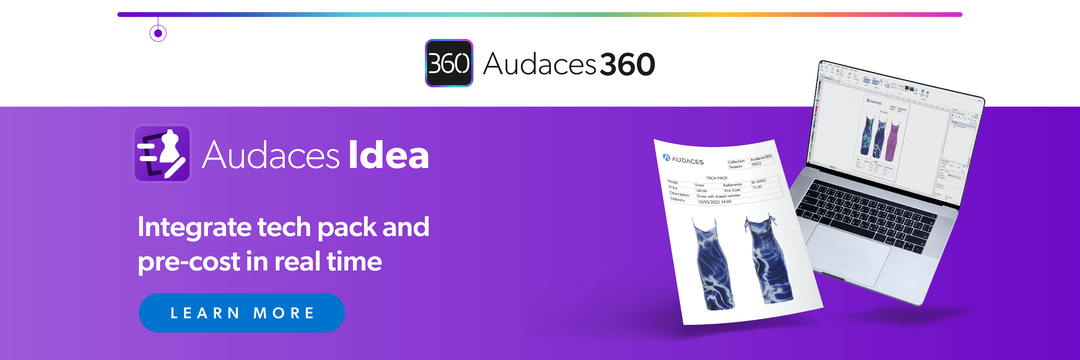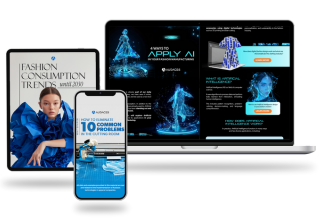Summary:
- The chromatic circle represents the primary, secondary, and tertiary colors alongside their variations;
- Also known as the color wheel, it comprises 12 segments, encompassing all known shades;
- Design your collection in a stunning 3D environment with Audaces360 multi-solution. Get the free trial now!

Colors are a potent way of expressing personality, with the ability to even influence the mood of those who wear them. Therefore, it’s crucial to master the concept of the chromatic circle and leverage it for your collection.
By doing so, you can create endless color combinations that align with the messaging of your garments.
Discover more about the color wheel and unleash its potential to inspire your next fashion launch.
Happy reading!
What is the chromatic circle?

The color wheel, or chromatic circle, depicts primary, secondary, and tertiary colors along with their variations.
Sumário
Divided into 12 pie-like sections, it starts with red and progresses through the hues of the rainbow (orange, yellow, green, blue, and indigo blue), culminating in purple.
Besides fashion, the chromatic circle is employed in various fields, including graphic design and decoration.
It also eases the selection of complementary colors or those intended to contrast, making the process far more efficient.
The origin of the color wheel
The concept of the chromatic circle is credited to none other than Isaac Newton, who made this revolutionary discovery in the 17th century.
Contrary to popular belief at the time, colors were not modifications of white but rather components of it. Newton identified the rainbow hues as fundamental colors, akin to the seven musical notes.
Moreover, Newton’s circle structure departed from the linear system of colors, which relied on light and dark characteristics. Instead, it organized colors in a circular arrangement based on their progression from red to violet.
This means that colors can be infinitely mixed and varied, producing new tones that remain unknown to us. That is, by the way, the job of many artists: to develop entirely new colors – at least, for our eyes!
Learn more: How to create a clothing color chart to elevate your collection
What is the chromatic circle for?
As with any form of representation, the chromatic circle aims to visually depict the color scheme and the relationships established between hues. It provides a fresh perspective and broadens the scope of potential color combinations.
Professionals in design, decoration, fashion, and other sectors that rely on color influence rely heavily on chromatic representation.
In the fashion industry, color plays a pivotal role in collection composition, style expression, and consumer appeal. It can convey a lot about one’s personality and preferences.
In essence, the color wheel serves as a valuable tool in the color selection process, allowing for endless possibilities and inspiring creativity across various domains.
The colors of the chromatic circle
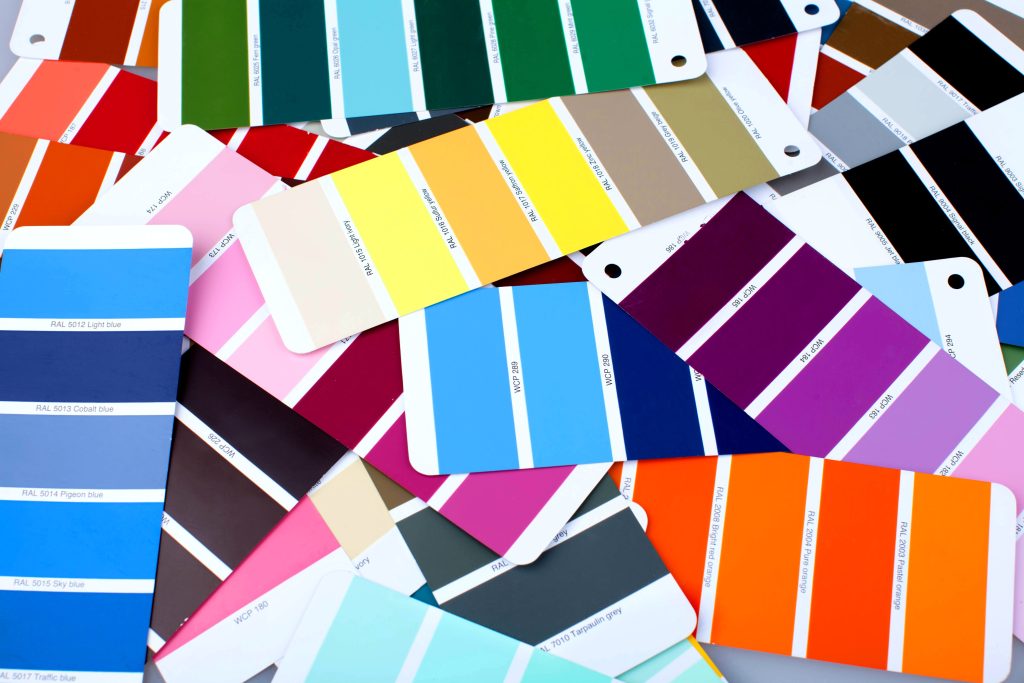
The chromatic circle is composed of 12 sections, which consist of three primaries, three secondaries, and six tertiary colors, each located on the circle’s edges.
A tertiary color is formed by mixing equal amounts of a primary and a secondary color. Meanwhile, the secondary color comes from mixing equal amounts of two primary colors. The primary colors, on the other hand, are considered pure and are not derived from any different colors.
Want to dive deeper into each of these classifications? Then keep reading!
Primary colors
Considering the base colors, red, yellow, and blue are the primary colors. All other colors can be derived from them, either through direct or indirect mixtures. They occupy the center of the color wheel.
Secondary colors
Purple (red + blue), green (yellow + blue), and orange (red + yellow) are the secondary colors, which are produced by combining equal parts of two primary colors. They are located on the circle adjacent to the primary colors.
Tertiary colors
Formed by mixing equal amounts of a primary color with a neighboring secondary color, the tertiary colors of the color wheel include orange-red, yellow-orange, green-yellow, blue-green, purple-blue, and purple-red.
How to apply chromatic circle combinations in fashion collections?
Knowing the main colors of the chromatic circle, you can now start creating combinations between them to form stylish and harmonious compositions.
It’s vital to differentiate the color combinations of the chromatic circle (such as primary, secondary, and tertiary) from the harmonization between colors.
Many fashion collections incorporate these concepts in their compositions, and it’s essential that you know how to apply them too.
Check out the tips below for enhancing the development of your fashion pieces!
1. Use creativity to your advantage
Above all, it is worth remembering that, regardless of the harmony, you don’t have to limit yourself to combining colors of the same tone – such as pastel or vibrant tones.
You can mix all the features and get creative! Consider adding neutral colors to your fashion collection, which are not part of the chromatic circle, for a well-balanced look.
Learn more: Explore the 2023 Fashion Week schedule and stay informed of top runway shows
2. Try adding nuances, fabrics, and materials
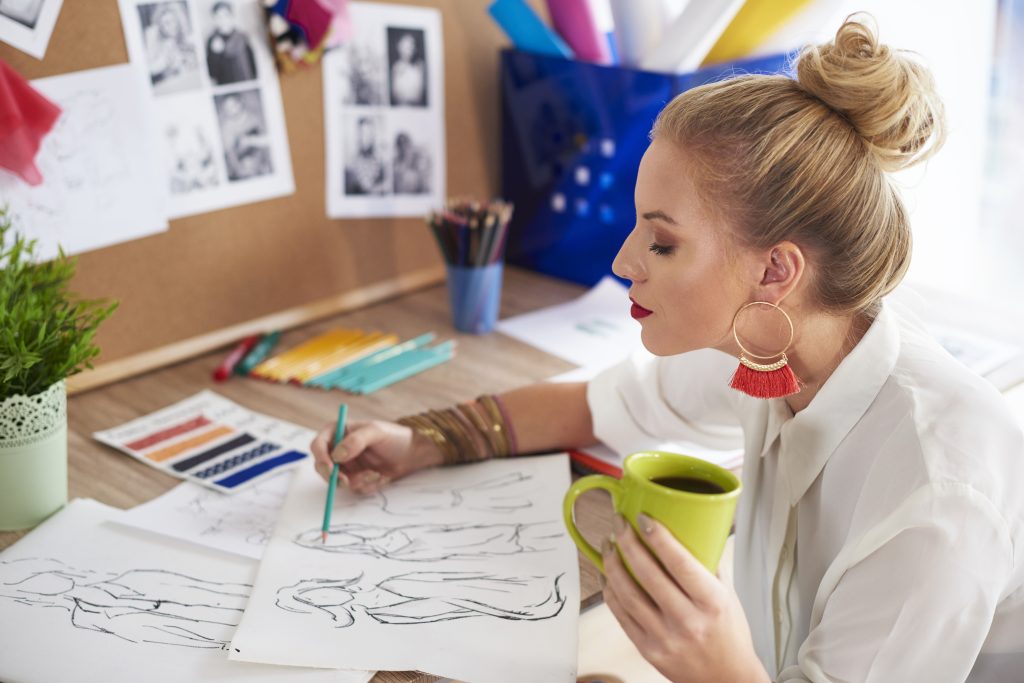
Conducting tests with different color compositions helps to create your collection color chart.
Experiments help to evaluate the tones used, their lightness and saturation, enabling you to identify if they complement each other and how they interact with various fabrics and materials before dyeing.
Learn more: 10 tips on creating an eye-catching fashion visual merchandising
3. Consider all elements of the collection
When choosing colors for your collection, you must observe some requirements to ensure they fit the expectations.
Always keep your target audience in mind when defining the collection’s colors, as they are the ones who will be wearing the pieces. So, it makes no sense to invest in pieces with neon colors for an audience with a more classic style, for example.
Also, consider the concept of the collection and the time of year it will be released. Spring and summer call for brighter colors, while fall and winter suggest more sober ones.
Learn more: Uncover the benefits of fashion trend forecasting
4. Consider the specificities of each segment
Each fashion segment may require specific colors for its collection.
For example, pajamas and nightgowns usually feature pastel tones, conveying tranquility and calm for a good night’s sleep.
On the other hand, collections for sportswear often feature vibrant colors, conveying more energy.
Meanwhile, for a collection more focused on tailoring pieces, more sober colors usually have a better result.
Learn more: How to make a fashion product catalog in 4 steps
Enhance your color customization with Audaces Isa
Technology assists you in making better decisions for your fashion production, and Audaces Isa is a top-of-the-line solution that can be your powerful ally in creating remarkable collections.
Audaces Isa is a comprehensive software program that helps you manage the entire lifecycle of your products from planning to launch.
By using our Fashion PLM, you can:
- Create visual collection maps to simplify planning;
- Define clear steps for your whole team to follow the same goal.;
- Anticipate costs and speed up the approval process;
- Monitor each design’s stage to improve workflow;
- Create a history of the designs you’ve developed;
- Reuse previous designs as a foundation for planning future collections;
- Access reports based on information about your pieces.
Want to learn how you can enhance your fashion collection planning with color customization in a 3D environment? Download our free e-book now and find out!
FAQ
The chromatic circle, or color wheel, is a visual representation of the primary, secondary, tertiary colors, and their variations. It is used to understand the relationships between colors and create color schemes.
It is divided into 12 parts, starting with red and moving through the colors of the rainbow, including orange, yellow, green, blue, indigo blue, and ending with purple.
The color wheel is used to understand how colors relate to each other and to create harmonious color schemes. It helps to visualize how colors can be mixed and combined to achieve the desired effect.


